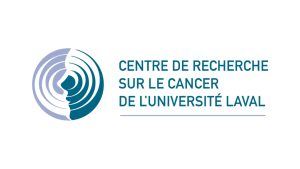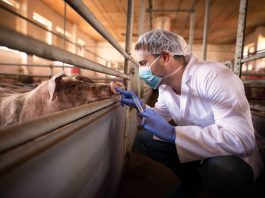Oncopole drives cancer research in Québec, uniting partners to accelerate innovation in treatment, prevention, and patient care.
Oncopole, pôle cancer du Fonds de recherche du Québec – secteur Santé (FRQ), is a key player in the fight against cancer in Québec. Thanks to the financial contribution of its partners, the Ministère de l’Économie, de l’Innovation et de l’Énergie, its founding partner Merck Canada, and its partners GSK and Pfizer Canada, it acts as a catalyst to harness the full potential of the research and innovation ecosystem.
A model of collaboration and innovation
Oncopole places a strong emphasis on collaboration between multiple stakeholders: patients, researchers, clinicians, industry and other strategic public and private partners. These collaborations enable the development and commercialisation of innovative medical technologies and help position the province as a world leader in cancer research.
Our funding programmes and collaborations enable us to support cutting-edge research in three complementary and interrelated research pillars:
Basic and translational research
Basic research advances knowledge, while translational research aims to translate that knowledge into concrete applications. Thanks to Oncopole’s support, Québec researchers can accelerate the discovery of new therapeutic targets and the development of innovative treatments (e.g. EMC2).
Clinical research
Through its partnerships, Oncopole ensures that Québec has a state-of-the-art clinical research infrastructure, giving patients access to innovative therapies and allowing researchers and companies to demonstrate the effectiveness of their innovations in a real-world setting (e.g. PROVEM).
Evaluative research and population health
This pillar focuses on the impact of treatments and health policies. It includes studies on the relevance of treatments, population health and access to care. Through this approach, Oncopole contributes to prevention and screening policies while seeking to improve equity in access to oncology care (e.g. Priorité patient).
Strength in research and innovation
Québec boasts a world-class university network, a universally accessible healthcare system and a community of highly experienced oncology researchers in an environment that fosters innovation. Key players include leading groups and organisations such as the Centre de recherche du Centre hospitalier de l’Université de Montréal (CRCHUM), the Centre de recherche du CHU de Québec (CRCHU) and the Centre de recherche de l’Université Laval (CRC), as well as the Réseau de recherche sur le cancer, which are profiled here.
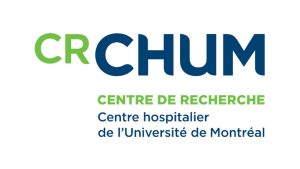
With one in two Canadians developing cancer in their lifetime, CRCHUM’s Cancer Axis aims to better understand the molecular mechanisms that turn a normal cell into a cancerous one. The aim is to develop cutting-edge tools for personalised medicine and improved patient care. The Axis favours a multidisciplinary approach involving basic researchers and clinicians and is characterised by its expertise in cancers of epithelial origin.
The Cancer Axis employs 21 core scientists and 107 clinician-scientists. Its development priorities for the coming years are focused on precision medicine, immunotherapy and microbiota. Cancer Axis researchers have acquired multi-omics technologies and stored patient samples in several biobanks, making them ideally positioned for the discovery of new biomarkers and therapeutic targets against cancer.
Between 2020 and 2024, Axis researchers published more than 1,317 articles, gave more than 265 invited lectures, and filed more than a dozen patents.
Highlights of recent years include major publications on cellular senescence by the teams of Drs Rodier and Ferbeyre, on the role of microbiota in cancer by the teams of Drs Routy, Santos and Elkrief, and on precision medicine with the microfluidic culture of tumour explants for personalised screening of anticancer treatments by the teams of Drs Mes-Masson and Gervais. In immunotherapy, important discoveries on new control points of the immune system have been published by Dr Stagg, and anticancer vaccine designs have been designed by Dr Bourgeois-Daigneault. In 2023, Dr S Turcotte treated the first patient in Québec with tumour infiltrating lymphocytes (TIL).
Finally, Dr Saad published the results of a clinical trial that is changing the treatment of patients with advanced prostate cancer, while Dr Liberman and colleagues established the role of preoperative chemotherapy in the management of gastric cancer.
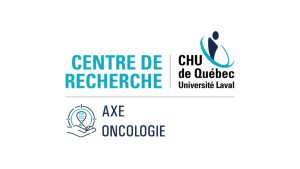
Revolutionising cancer treatment: The game-changing promise of biomimetic 3D models
The challenge: Cracking cancer’s complexity
Precision oncology is transforming cancer care by tailoring treatments to individual patients. However, cancer is not one disease – it’s a complex, dynamic and heterogeneous condition. Tumours vary within patients, shaped by factors such as cellular diversity, the physical environment, immune interactions, and blood supply. To refine personalised treatments, scientists must first understand how these variables drive cancer evolution.
Outdated models are holding us back
Current research relies heavily on animal models and organoids, but both have limitations. Animal studies are costly, ethically controversial, and often fail to accurately reflect human biology. Organoids, though useful, lack the complexity of real tumours, making it difficult to replicate the heterogeneity between patients. To unlock the full potential of precision oncology, researchers need models that mimic the intricate realities of cancer.
A breakthrough in 3D cancer modelling
Biomimetic 3D cancer models are cutting-edge technology that mimics the spatial organisation, cellular interactions, and mechanical properties of tumours. They replicate essential biological processes like cell migration, proliferation, and differentiation, which are crucial for understanding cancer’s behaviour. Using patient-derived cancer cells, these models can also simulate personalised drug responses, providing a more accurate way to predict treatment outcomes.
ICE Programme: Québec City’s Beacon of Cancer Research Innovation
For over 40 years, Québec City has been a leader in cancer research, thanks to trailblazers like Dr Luc Bélanger, who founded the Université Laval Cancer Research Center (CRC) in 1984, establishing a hub for pioneering cancer studies. Around the same time, Dr. François Auger launched the Laboratoire d’organogénèse expérimentale (LOEX), a leader in tissue engineering.
With the opening of a new Precision Oncology Center (see picture), LOEX and CRC are now side by side within the CHU de Québec-Université Laval research centre, adjacent to one of Canada’s largest cancer treatment facilities, the Centre intégré de cancérologie. This integration, part of a $2bn hospital complex, has sparked unique collaborations across oncology, physics, tissue engineering, and molecular biology.
The result? The launch of the Innovative Cancer Engineering (ICE) facility, backed by a $6m investment from the Canadian Innovation Funds. ICE features cutting-edge tools like 3D printing, flow cytometry, and spatial transcriptomics to build sophisticated 3D models that replicate tumour complexity – pushing the frontiers of personalised cancer research.
Collaborative innovation at the ICE facility
The ICE facility serves as a collaborative platform for researchers, clinicians, and industry experts. By offering unique tools and resources, ICE enhances cancer understanding and supports personalised treatments. We welcome partners to leverage our advanced infrastructure, developing innovative solutions to cancer care challenges. This initiative creates opportunities for researchers and organisations to engage with our state-of-the-art facilities and advance cancer treatment.
A blueprint for personalised cancer treatment
The future of cancer treatment lies in precision. By combining tissue engineering with cutting-edge cancer research, the ICE programme offers a powerful new way to understand and combat cancer. With these 3D biomimetic models, we are closer than ever to providing every patient with the best possible treatment – one tailored to their individual needs and biology.
RRCancer: Uniting Québec’s Oncology Research
The Québec Cancer Research Network (RRCancer.ca) was formed more than 20 years ago under the leadership of Dr Anne-Marie Mes-Masson (CRCHUM) and is presently co-lead by Drs Jean-Yves Masson (CHU de Québec) and Sonia del Rincon (LDI).
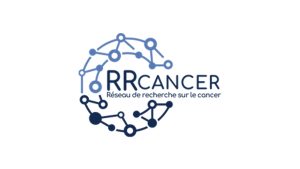
The network has grown from a few dozen members, mostly fundamental and clinician scientists, with the vision to create an infrastructure of high-quality biobanking to catalyse translational oncology research in the province of Québec. The network has expanded its activities by supporting more than 40 biobanks and now regroups more than 750 members of multidisciplinary expertise. Researchers, clinicians, professionals, students/fellows, patients and strategic partners are working toward the same goal: improving the diagnosis, prognosis, as well as care and services for cancer patients across the province.
In essence, the mission of RRCancer echoes the ‘Conquering Cancer: Mission Possible’ statement of the Horizon Europe (HE) Programme to deepen cancer understanding, prevent and optimise diagnosis and treatment, support quality of life, and ensure equitable access across Europe.
Strategic Axes: Catalysts of Innovation with potential impacts on Excellent Science (HE-Pillar I) and Global Challenges (HE-Pillar II)
RRCancer recognises the importance of aligning its research efforts with those of Horizon Europe, especially since Canada’s announcement in Summer 2024 as a formal decision-maker within the programme. Cancer research within the network is articulated across four main axes focusing on precision health.
The Translational Research and Bank for Tissue and Data in Solid Cancers (BTD) axis, co-led by Drs Anne-Marie Mes-Masson (CRCHUM) and Morag Park (GCI) focus on biobanking biological material and comprehensive data collection for solid cancers, including hereditary breast and ovarian cancer. Aligned with HE-Pillar I, the BTD develops and optimises live biobanking strategies, uses innovative research infrastructure for biomarker discovery, and consolidates immuno-oncology efforts. The Québec Leukemic Cell Bank and Hematological Cancer Research (BCLQ) axis, led by Dr Josée Hébert (CR-HMR), has a primary objective of understanding the mechanisms involved in haematological malignancies, bringing expertise in haematology, oncology, and immunology.
The BCLQ develops state-of-the-art tools to facilitate blood cancer diagnosis, prognosis and treatments, as well as develop new therapies for these cancers. The Experimental therapy axis (TE), co-led by Drs Gerald Batist (LDI) and Shirin A Enger (LDI), uses AI- and molecular-based studies to advance personalised medicine. An integral part of this axis is to form a bridge with the bio-pharmaceutical industry for the purpose of rapidly developing new cancer treatments.
Finally, the newly established Learning and Equitable Health System (SSAE) axis, co-led by Drs Lise Gauvin (CRCHUM) and Sophie Marcoux (CHU de Québec), is well aligned with HE-Pillar II, aiming to foster collaboration amongst researchers in implementation, clinical sciences, with the population and government.
Additionally, it focuses on accelerating the adoption of innovative therapies and promoting evidence-based cancer practices to enhance the system’s effectiveness and sustainability. For this, they are working toward understanding Québec’s perception of cancer, based on the Baromètre Cancer programme developed in France.
High-quality biobanking: A research infrastructure supporting Excellent Science (HE-Pillar I)
The RRCancer is a founding member of the Canadian Tissue Repository Network (CTRNet), which has been providing the research community with educational material, certification processes, policies, and standard operation procedures to support high-quality biobanking aligned with international best practices.
Furthermore, along with its longstanding partners, the RRCancer supports the development of the ATiM data management system which provides a comprehensive solution to track all biobanking activities including consent, clinical data, inventory management and administrative tasks.
The strength of this infrastructure is that it favours cohesive interoperability across institutions, which is important as the biobanks and researchers within RRCancer are participating in several multi-institutional initiatives. As an example, researchers of all axes participate and occupy leadership positions within the Marathon of Hope Cancer Centres Network (MOHCCN), an initiative of the Terry Fox Research Institute. This collaborative initiative aims to close the gap between research in the lab and patient care in the clinic.
To date, more than RRCancer 4,500 biobanked specimens from 1500 participants have had their whole genomes and transcriptomes sequenced, and numbers are growing. These multi-omics data and their associated clinical data will be available to the research community..
Another RRCancer initiative, Leucegene arising from our BCLQ axis, aims to improve the genomic classification of acute myeloid leukaemia (AML) and develop new, effective precision therapies for AML. Whole genome, exome and/or transcriptome were generated from 452 participants, creating a richly annotated dataset.
These are only two of the numerous examples of the impact of having this powerful research infrastructure, which has the potential to help overcome the Global Challenge of Cancer (HE-Pillar II).
Supporting the next generation of scientists: Ensuring Open Science practices
At RRCancer, we emphasise training the next generation of scientists and integrating them into the research ecosystem. Through our focused initiatives, we support graduate students in disseminating their research locally, nationally and internationally.
Aligned with the Open Science philosophy, such international interactions are crucial for our trainees to learn the importance of transparent collaboration and will shape well-rounded researchers who are knowledgeable in global challenges in the health research field.
Furthermore, the RRCancer facilitates the integration of newly recruited early career scientists within the multicentre structuring research projects, favoring interaction, and accelerating collaboration and establishment of their research programme.
Creating opportunities for increased research impact and visibility through citizen involvement
In September 2024, we held our biennial two-day Symposium, celebrating the network’s 20th anniversary, attended by over 420 participants. The event featured Dr Aaron Newman from Stanford, who presented computational methods for understanding cancer complexities. Scientific sessions included ten rising star early-career investigators and 20 trainees from across Québec.
Notably, members of Québec’s RRCancer patient partner group co-chaired the sessions, offering impactful personal testimonies, which made the event especially memorable. The Symposium concluded with two special sessions: one on the ‘Learning and Equitable Health System’ axis, followed by Dr Carol Jabet presenting FRQ-Oncopole’s strategic vision in Québec oncology.
Please note, this article will also appear in the 20th edition of our quarterly publication.


